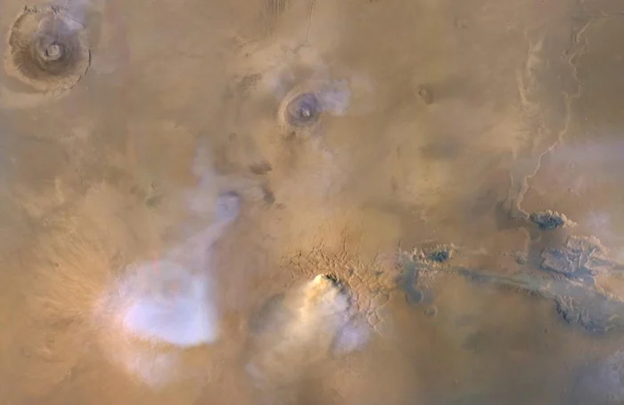Study reveals the cause of severe dust storms on Mars

Mars is famous for its seasonal dust storms, which can sometimes escalate to cover the entire planet.
These storms in June 2018 were so intense that they obscured most of the surface of Mars, causing NASA to lose contact with the Opportunity rover. It turned out later that this was the end of the mobile that worked in record time.
An understanding of these storms and their causes is essential to ensure that robotic, solar-powered missions can continue to operate, and that future manned missions are safe.
Scientists investigate seasonal changes - such as changes in the amount of solar energy absorbed and an increase in temperature - that trigger dust storms and cause them to gather and intensify.
A recent study by researchers from the University of Houston found that these storms may result from seasonal imbalances in the amount of solar energy the planet absorbs and releases.
These discoveries may lead to a new understanding of the Martian climate and atmosphere. A doctoral student in the Department of Atmospheric and Earth Sciences at the University of Houston, Elaine Creasy, is leading the research part of her doctoral thesis.

A 2010 Martian dust storm captured by NASA's Mars photographer
The term "radiative energy balance" refers to the amount of solar energy the planet absorbs from the sun and radiates heat to the outer environment. It is a basic criterion for describing a planet's climate and atmospheric cycles.
The team collected observations from multiple missions, such as the Mars Reconnaissance Orbiter, the Curiosity Rover, and the Insight rover. This allowed them to create a model of the Martian climate and estimate the amount of energy it emits in total according to the season, including periods of widespread dust storms.
"One of the most interesting discoveries is that excess energy - the difference between the amount of energy absorbed and emitted - may be one of the mechanisms behind the generation of dust storms on Mars," says Creasy.
When the Hubble Space Telescope imaged Mars in June 2001, it detected the formation of storm cores in Hellas Piesen - the oval region in the lower right corner of the planet in the attached image - and another storm was observed near the Arctic Circle.

On the left is the image of Mars taken by the Hubble telescope in June 2001, on the right is the image of the planet in September of the same year. A dust storm that lasted about two months obscured the entire surface of the planet.
The results showed strong seasonal and daily variations in the amount of solar energy radiated by Mars. Specifically, the researchers found evidence of a significant energy imbalance of about 15.3% between Martian seasons, compared to 0.4% on Earth. They also found that the total amount of energy released during the 2001 dust storm decreased by 22% during the day and increased by 29% at night.
"Our results, which show significant energy imbalances, suggest that current models should be reconsidered, as they usually assume that Mars' radiative energy is balanced between seasons," explains Dr. Our results highlight the link between dust storms and energy imbalances, providing new insight into the origins of dust storms on Mars.”
The team's findings, along with numerical models of the Martian climate, may improve our understanding of the Martian climate and its atmospheric distributions. This is critical for future manned missions to Mars, which NASA and China plan to launch in the next decade.
These discoveries have improved our understanding of the Earth's climate by predicting the behavior of the environment in the future. Learning more about the environments of other planets leads to a better understanding of our planet.
Source: Science Alert - Translation: "I believe science"
https://shahbapress.net/archives/25187?fbclid=IwAR29A4mqhWxRMPhRuZirAnnWU2q0YNIvntOWudlZiGRt-GlXrx-K7qHKOzE

